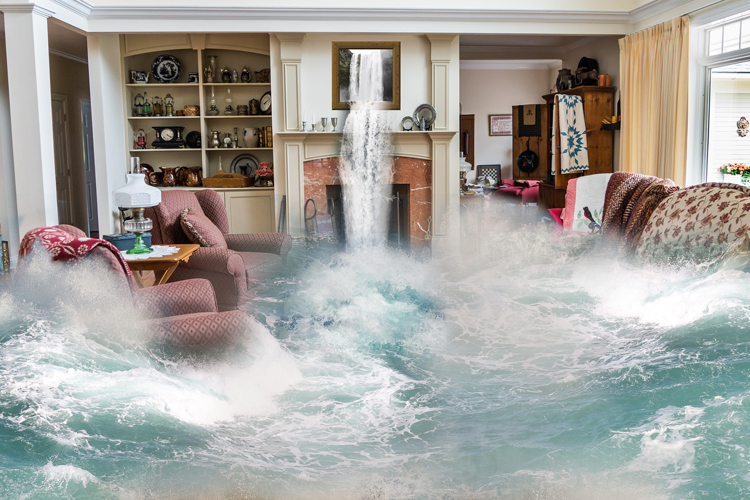Do's & Don'ts of Water Damage.
Do's & Don'ts of Water Damage.
Blog Article
What're your opinions concerning Safety Tips To Prevent Fire And Water Damage?

Though water offers life, water invasion on parts where it's not intended to be can lead to damage. It can peel away surfaces as well as erode the structure if the water saturates into your framework. Mold and mildew and mildew additionally prosper in a wet setting, which can be dangerous for your health and wellness. Houses with water damage odor old and also musty.
Water can come from several sources such as tropical cyclones, floodings, ruptured pipes, leakages, as well as sewage system issues. In case you experience water damages, it would certainly be good to recognize some safety and security preventative measures. Below are a few guidelines on how to deal with water damage.
Do Prioritize Residence Insurance Policy Protection
Water damages from flood because of heavy winds is seasonal. Nonetheless, you can also experience an abrupt flood when a damaged pipe instantly bursts right into your residence. It would certainly be best to have home insurance coverage that covers both disasters such as all-natural tragedies, and emergency situations like damaged plumbing.
Do Not Neglect to Shut Off Utilities
This cuts off power to your entire house, protecting against electrical shocks when water comes in as it is a conductor. Don't forget to turn off the primary water line shutoff.
Do Remain Proactive as well as Heed Weather Condition Alerts
Storm floods can be really uncertain. Stay proactive as well as ready if there is a background of flooding in your neighborhood. Pay attention to emptying warnings if you live near a creek, lake, or river . Secure belongings from the very beginning and also basement, after that put them on the highest feasible level. Doing so decreases potential home damages.
Do Not Overlook the Roofing System
Before the weather transforms frightful, see to it you have a roofing inspection. Actually, it would certainly be prudent to get this service each year as it can minimize complicated problems. If there are no holes and also leakages in your roof covering, you can prevent rainfall damages. Your roofing professional will likewise care for faulty rain gutters or any other indicators of weakening. This will certainly avoid water from streaming down your walls as well as saturating your ceiling.
Do Take Notice Of Small Leaks
A burst pipe does not take place overnight. Generally, there are warnings that suggest you have compromised pipelines in your house. For instance, you might observe gurgling paint, peeling wallpaper, water touches, water discolorations, or dripping sounds behind the wall surfaces. Ultimately, this pipe will certainly burst. Preferably, you ought to not await points to rise. Have your plumbing fixed prior to it causes large damages.
Do Not Panic in Case of a Burst Pipe
Keeping your presence of mind is vital in a time of crisis. Since it will certainly stifle you from acting quickly, stressing will just worsen the trouble. Timing is essential when it comes to water damages. The longer you wait, the more damages you can expect. Thus, if a pipe bursts in your house, instantly shut down your major water valve to remove the source. Then unplug all electric outlets in the location or switch off the breaker for that part of your home. Call a trustworthy water damage remediation professional for support.
Water provides life, water invasion on parts where it's not expected to be can result in damages. Residences with water damage odor mildewy and also old.
Water damages from flooding fees to hefty winds is seasonal. You might discover bubbling paint, peeling wallpaper, water streaks, water discolorations, or leaking sounds behind the wall surfaces. When it comes to water damage, timing is crucial.
Some Do's & Don't When Dealing with a Water Damage
DO:
Make sure the water source has been eliminated. Contact a plumber if needed. Turn off circuit breakers supplying electricity to wet areas and unplug any electronics that are on wet carpet or surfaces Remove small furniture items Remove as much excess water as possible by mopping or blotting; Use WHITE towels to blot wet carpeting Wipe water from wooden furniture after removing anything on it Remove and prop up wet upholstery cushions for even drying (check for any bleeding) Pin up curtains or furniture skirts if needed Place aluminum foil, saucers or wood blocks between furniture legs and wet carpet Turn on air conditioning for maximum drying in winter and open windows in the summer Open any drawers and cabinets affected for complete drying but do not force them open Remove any valuable art objects or paintings to a safe, dry place Open any suitcases or luggage that may have been affected to dry, preferably in sunlight Hang any fur or leather goods to dry at room temperature Punch small holes in sagging ceilings to relieve trapped water (don't forget to place pans beneath!); however, if the ceiling is sagging extremely low, stay out of the room and we'll take care of it DO NOT:
Leave wet fabrics in place; dry them as soon as possible Leave books, magazines or any other colored items on wet carpets or floor Use your household vacuum to remove water Use TV's or other electronics/appliances while standing on wet carpets or floors; especially not on wet concrete floors Turn on ceiling fixtures if the ceiling is wet Turn your heat up, unless instructed otherwise

As a passionate reader about Preventing Fires and Water Damage In Your Home, I assumed sharing that piece of content was sensible. Sharing is good. Helping people is fun. Many thanks for taking the time to read it.
Report this page